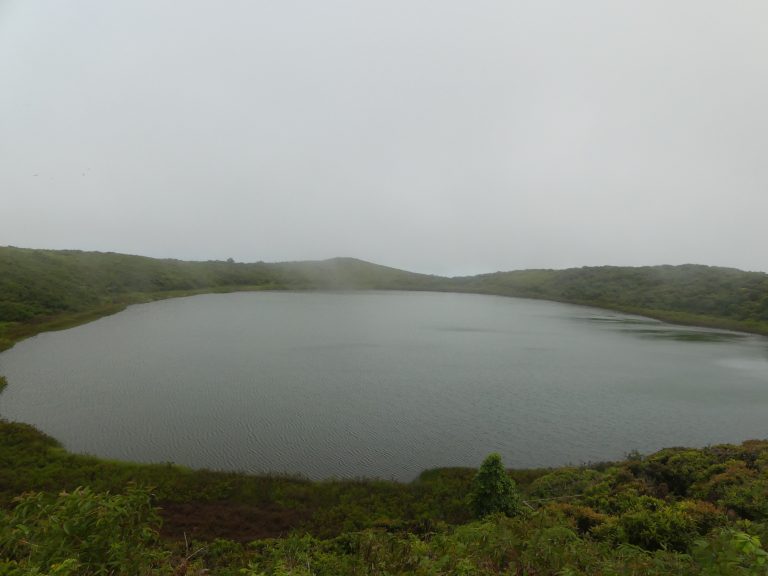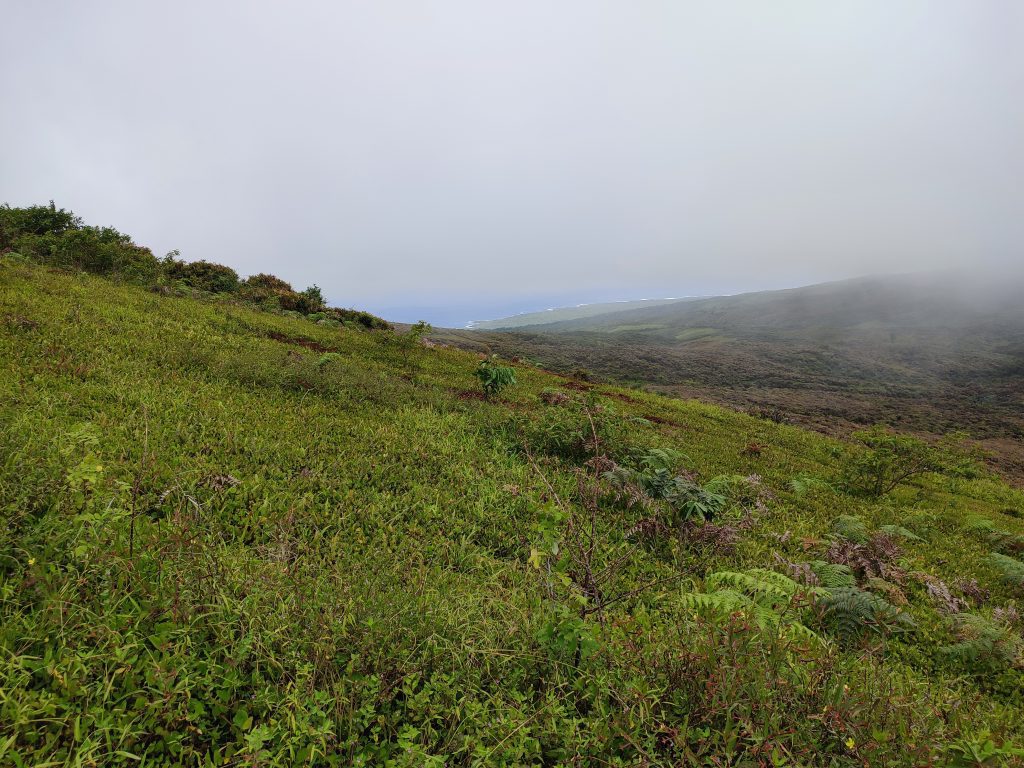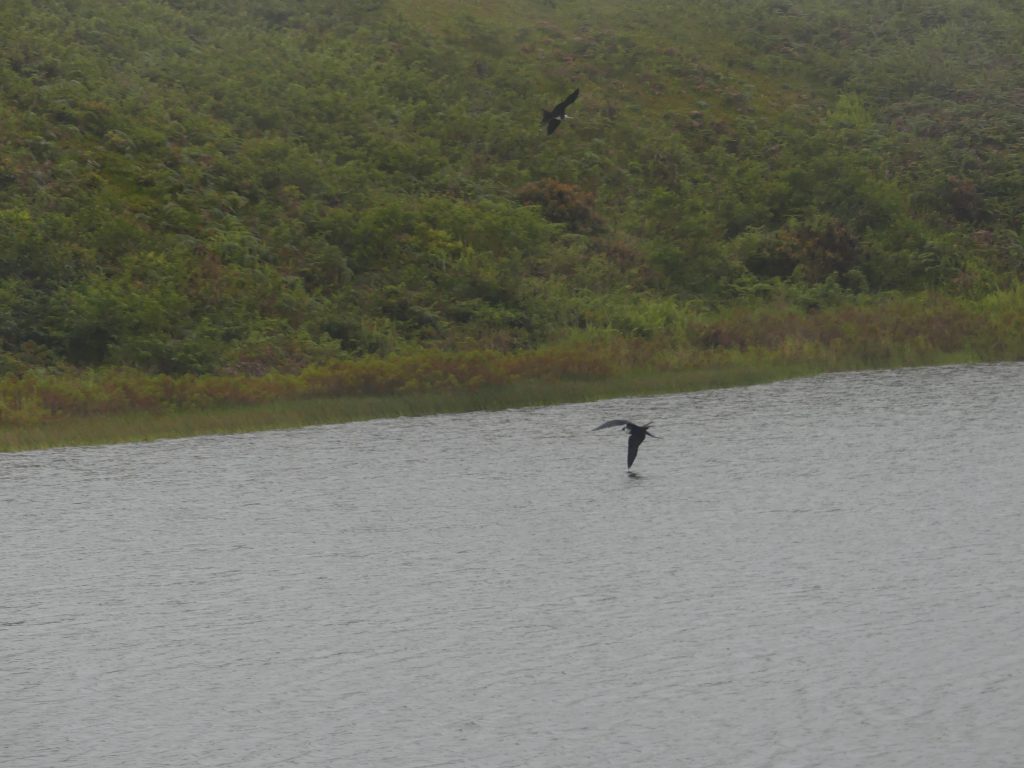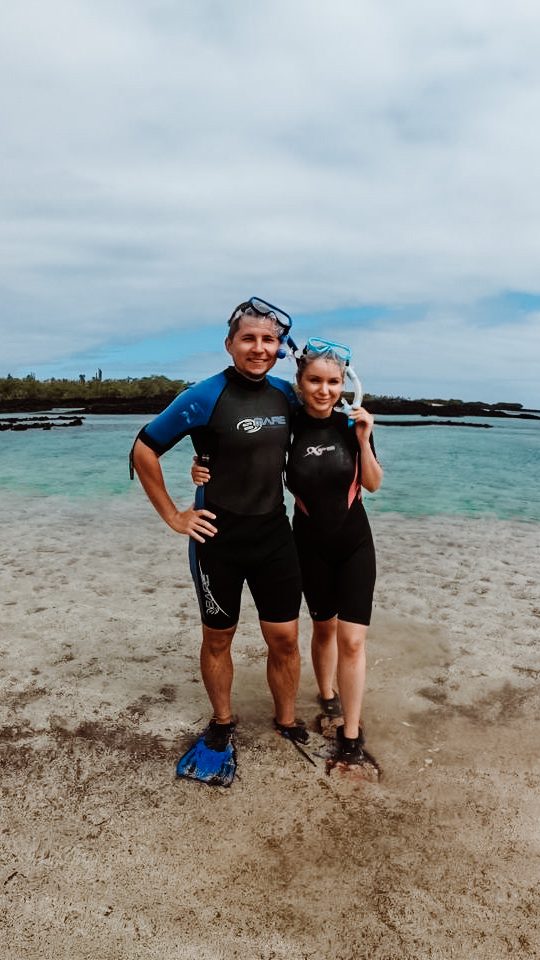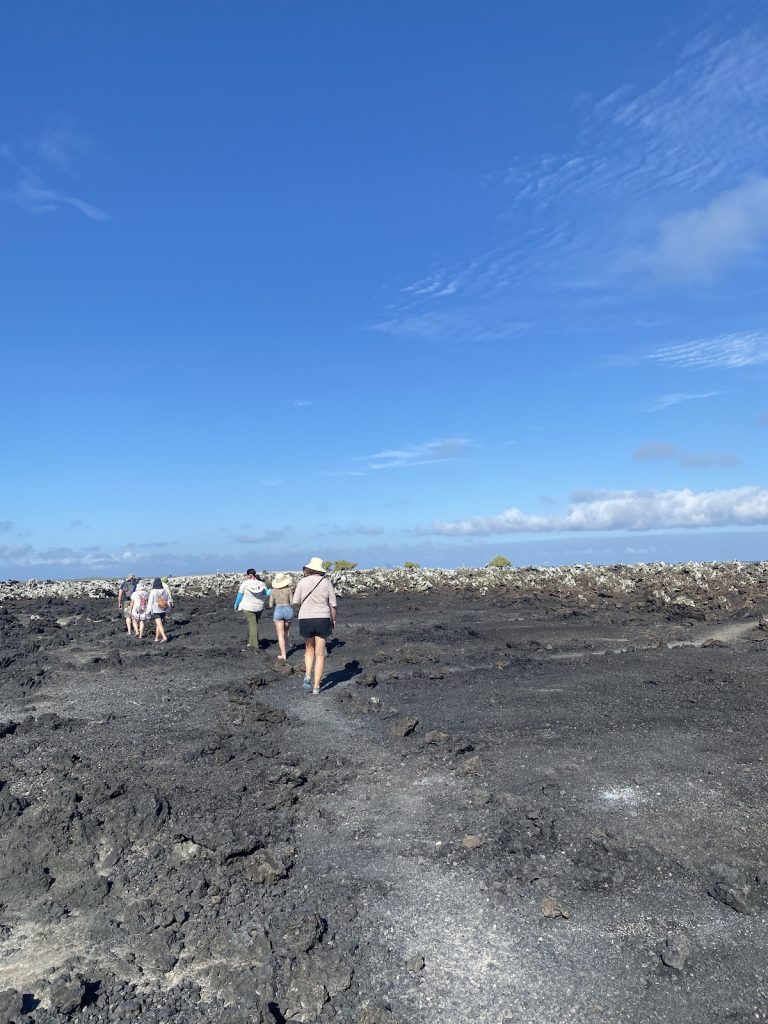El Junco Lagoon, perched high at about 700 meters above sea level, is a sight my wife and I were eager to experience in the Galapagos. It’s one of the few permanent freshwater bodies on the islands, which made it all the more intriguing for us. As we arrived, we spotted frigate birds, white-cheeked pintails, and common gallinules flying gracefully around the lake. We watched them cleanse the salt from their feathers—a fascinating sight. We also learned that the lake got its name from a type of plant called “junco” that grows abundantly in the area.
We were taken aback by the sheer size of El Junco. It stretches over 60,000 square meters and holds a staggering 360,000 cubic meters, or around 9 million gallons, of water. Standing by its edge, we realized how vast it truly is, with a diameter of about 270 meters and a depth of six meters. Knowing that the lake relies entirely on rainfall made us appreciate how delicate this ecosystem is. During droughts, the water level can drop by up to a meter, but when heavy rains hit, it rises dramatically, turning into a powerful torrent that spreads over the surrounding vegetation and agricultural lands.
Looking back, while El Junco Lagoon is peaceful, knowing how to balance your time between major attractions and quieter spots makes all the difference. Skip the uncertainty I faced and get a FREE personalized Galapagos trip quote from my trusted local experts who know exactly how to optimize your San Cristobal itinerary. Your booking helps support both this blog and local Galapagos communities.
Table of Contents
Plan perfect trip to Ecuador & Galapagos
I spent countless hours researching everything about traveling to Ecuador, and I created this blog for fellow travel enthusiasts who want the best, most reliable information. But if you want to save time, we’ve partnered with the top local agency to plan your dream trip.
How to Get to El Junco Lagoon
El Junco Lake sits about 19 kilometers, or roughly 11 miles, from Port Baquerizo Moreno. My wife and I were fascinated to learn that this lake actually fills the caldera of an extinct volcano—a detail that would be hard to pick up on unless you know a bit about geology. It added a layer of mystery to the already serene setting.
To reach the lake, we arranged a guided tour through a local company. Alternatively, we found out that hiring a taxi for the journey is also a practical and fairly priced option for those who prefer a bit more flexibility.
Hiking to El Junco Lagoon
Reaching El Junco felt like a mini adventure. We parked and took a short but somewhat steep stroll up to the hilltop. On clear days, they say the views stretch beautifully over the island. However, it was a bit overcast during our visit, making it a game of patience as we waited for the clouds to part.
Hiking around El Junco is an experience in itself. The loop around the lake from the parking lot and back is only about 2 kilometers—just enough to soak in the scenery without too much effort. We came right after a dry spell, so although the trail was mostly clear, a few spots remained a bit slick and muddy. In wetter months, particularly from January to April, I’d suggest preparing for a slower, muddier trek.
We were lucky to spot a lively flock of Cattle Egrets on the hillside, stirring into action as we approached, giving us some fantastic photo opportunities. Early morning or late afternoon visits increase the chances of seeing other birds too, like finches or maybe even a Galapagos flycatcher.
As we walked, nearly every turn offered stunning views of the island and ocean. Cerro Brujo stood out in the distance, while closer by, three windmills on a nearby slope symbolized San Cristobal Island’s shift toward renewable energy—a remarkable sight and a reminder of the island’s forward-thinking efforts.
Trust me, while El Junco is serene, combining it with other highland attractions creates a more fulfilling day trip! Want an expertly planned itinerary that makes the most of your time in San Cristobal’s highlands? Get a FREE quote from my recommended local agency. Your booking supports this blog and local Galapagos businesses.
Best Time to Visit El Junco Lagoon
Bottom Line
El Junco is a common stop on day trips from Puerto Baquerizo Moreno to the Tortoise Hatchery on the other side of the island. While I enjoyed the peaceful scenery around the lake, I can’t say it was a standout highlight for me compared to other experiences in the Galapagos.
The surroundings are truly serene, making it an ideal spot to sit, lay around, and just let your thoughts wander. If you’re looking for a quiet escape in nature, El Junco Lagoon is a good choice to unwind and soak up the calm vibe.
That said, I’d recommend adding El Junco to your itinerary only if you have extra time. While it’s lovely, it might not leave the same impression as some of the other, more iconic sites in the Galapagos.
Plan perfect trip to Ecuador & Galapagos
I spent countless hours researching everything about traveling to Ecuador, and I created this blog for fellow travel enthusiasts who want the best, most reliable information. But if you want to save time, we’ve partnered with the top local agency to plan your dream trip.

